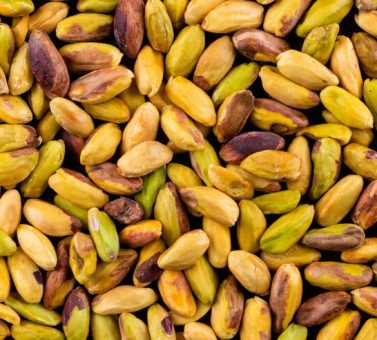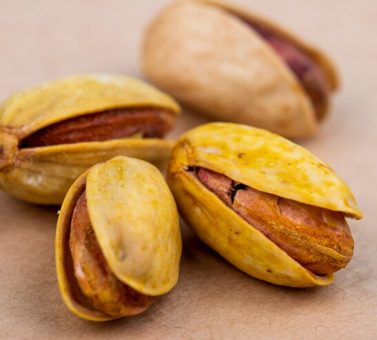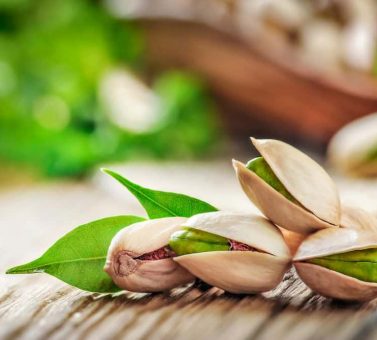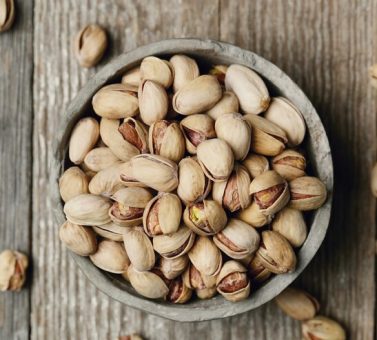
Pistachios are the seeds of the pistachio tree. They are usually green and have a slightly sweet taste. They are called nuts, but botanically pistachios are seeds. People have been eating them for thousands of years.
Nuclei can have different colors, from yellow to shades of green. They are usually about an inch long and half an inch in diameter. If you want to taste one, you have to crack the hard shell first.
California, Arizona, and New Mexico account for all of the commercial pistachio production in the United States. You can buy pistachios shelled, shelled, roasted or salted. They are available in most grocery stores and you can buy them in bulk from pistachio growers.
Pistachios are a nutritious addition to your diet. They consist of 20% protein, which is a much higher calorie-to-protein ratio than most nuts. This protein can make you feel full longer and help you manage your weight. Pistachios also have a lot of antioxidants, second only to walnuts and pecans. Antioxidants help fight free radicals, which are compounds in your body that can damage cells, proteins, and DNA, causing premature aging as well as diseases like cancer, diabetes, and heart disease.
Pistachios are a good source of unsaturated fatty acids and potassium. Both have antioxidant and anti-inflammatory properties.
Research has found several possible health benefits of these delicious nuts, including:
Pistachios are rich in fiber, which can act as a prebiotic, or food that is digested by the good bacteria in your gut and helps them grow. Your gut bacteria are then able to ferment the fiber and convert it into short-chain fatty acids, which help reduce the risk of cancer, heart disease, and digestive disorders.
Pistachios have been shown to have cholesterol-lowering effects. These nuts contain fiber and high amounts of polyunsaturated and monounsaturated fats, all of which are associated with healthy cholesterol levels and a reduced risk of heart disease. And research shows that eating pistachios—especially compared to eating other nuts—lowers blood pressure.
Pistachios have a low glycemic index, which means that eating them does not cause a large increase in blood sugar. They also contain antioxidants, carotenoids, and phenolic compounds, all of which support healthy blood sugar levels.
Amino acids are considered essential, so if your body can’t make them, you must get them through your diet. Some studies show that the amino acids in pistachios lower blood fat and sugar levels (glycemic index) and can strengthen your blood vessels and make them more flexible.
Pistachios have the highest levels of zeaxanthin and lutein among nuts, both of which protect your eyes from blue light damage as well as macular degeneration, an eye disease that can cause vision loss as you age.
Weight loss Quick tip: Skip the shelled pistachios and choose in-shell pistachios for a snack. Shelled pistachios promote slow, mindful eating because it takes time to remove the shell. Shells also stack up in front of you, showing how much you’ve eaten so far. Research has shown that people who eat unshelled pistachios consume 41% fewer calories in one sitting than people who eat shelled pistachios.
Eating pistachios may also help with weight loss. They are high in fiber and protein, which make you feel full and may help you eat less.
 01/11/2023
01/11/2023
Help to lose weight Pistachios are a good source of protein, with about 6 grams of protein per ounce. They are also low in calories. About 50 pistachios barely contain 160 calories. Because of this combination of high protein and low calories, they are a satisfying snack that can help you shed extra pounds. Reduce […]
 01/11/2023
01/11/2023
(frequently asked questions) Q: How many pistachios should you eat a day? a. A handful of pistachios in the evening can help you reap all the benefits and boost your metabolism as well. s. Is it okay to eat pistachios every day? A- Eating any nuts should be in moderation. So eating pistachios five times […]
 01/11/2023
01/11/2023
Pistachios: nutritional value, benefits and side effects The pistachio is a member of the cashew family (Anacardiaceae) and is historically the oldest nut that has been consumed for centuries. They tend to grow in dry areas in warm climates. The name pistachio is derived from the Greek word “Pistakion” which means green nut. They have […]
 01/11/2023
01/11/2023
What is pistachio? Pistachios are the seeds of the pistachio tree. They are usually green and have a slightly sweet taste. They are called nuts, but botanically pistachios are seeds. People have been eating them for thousands of years. Nuclei can have different colors, from yellow to shades of green. They are usually about an […]